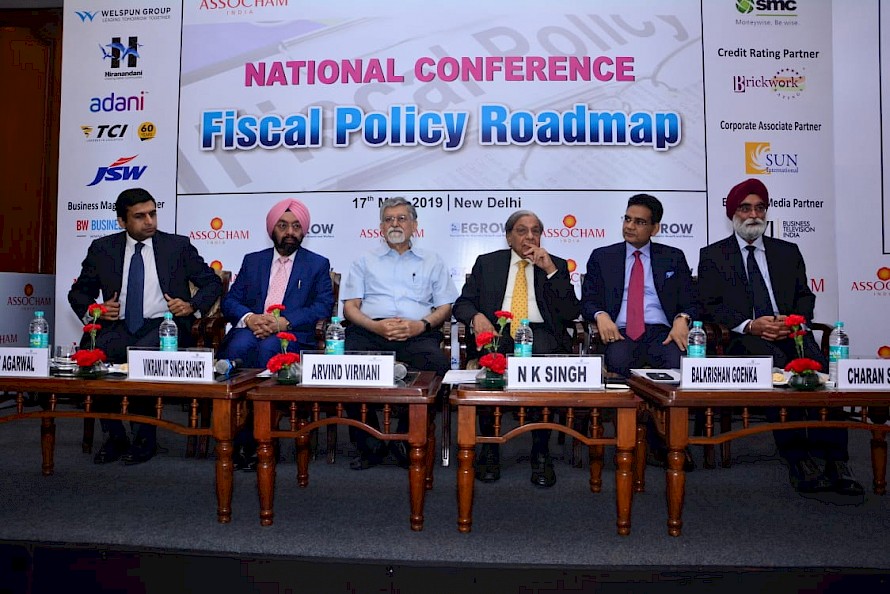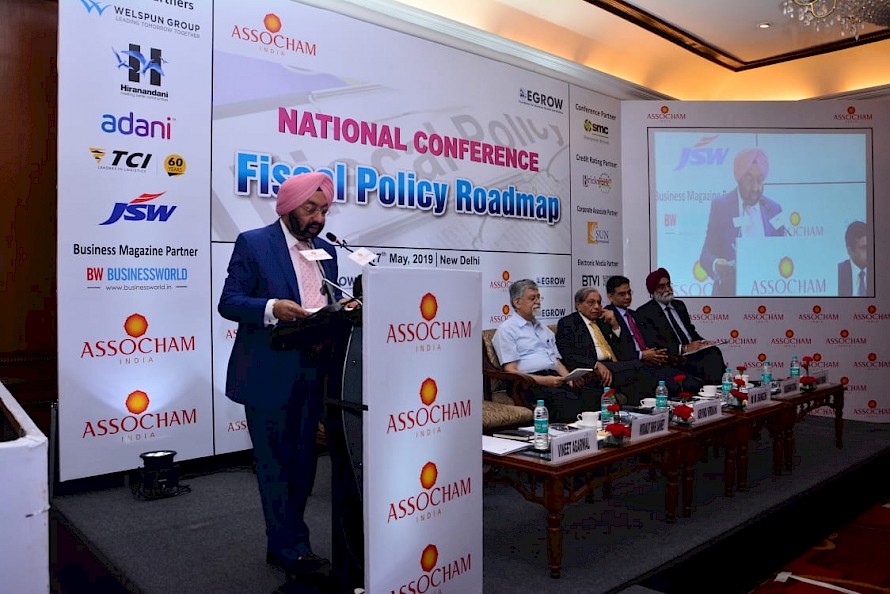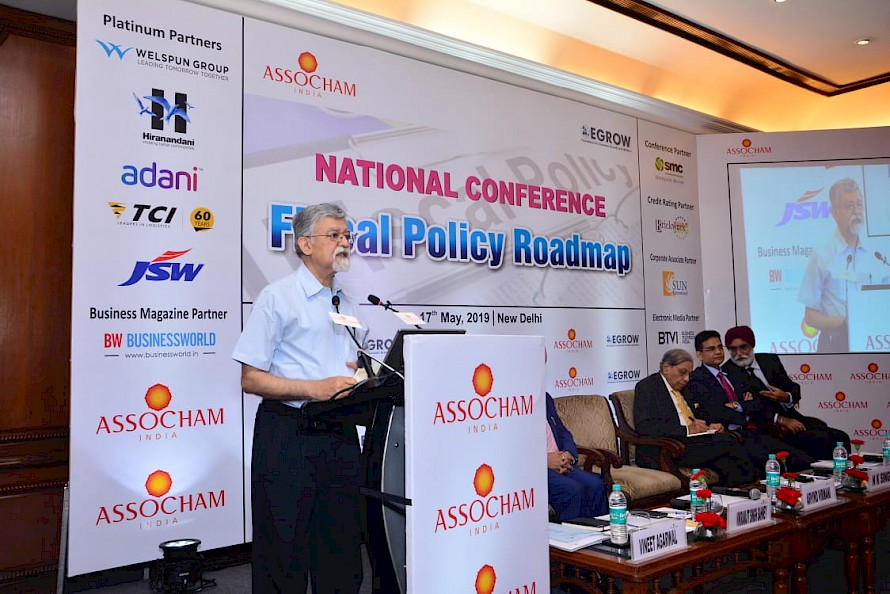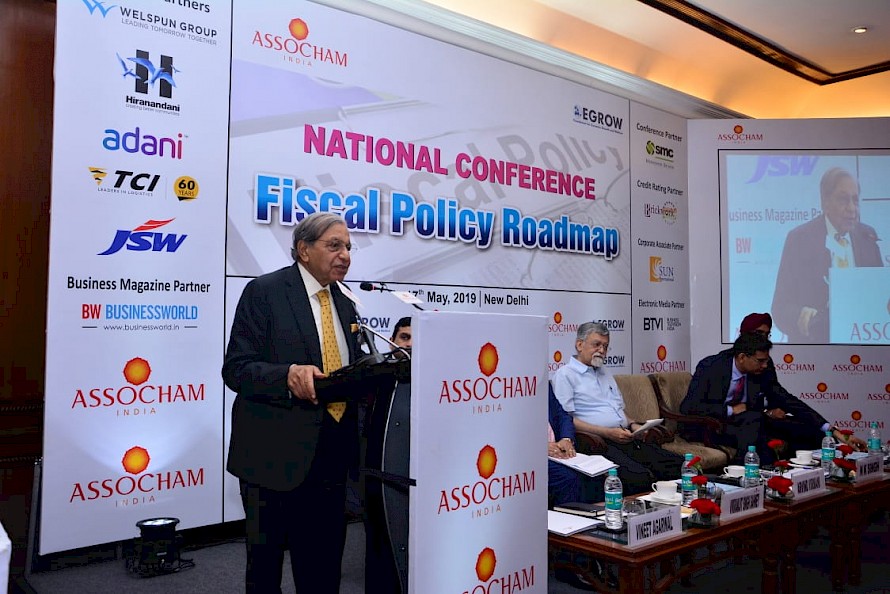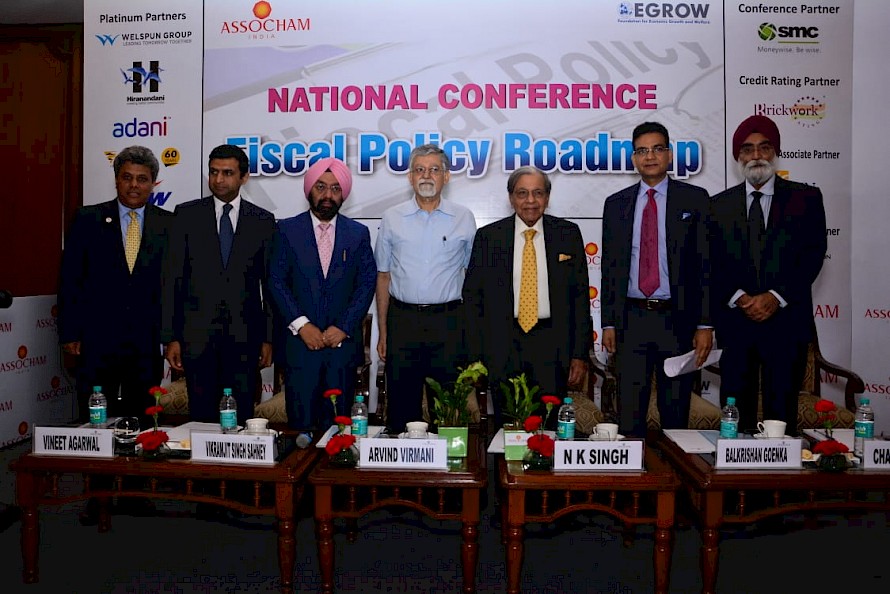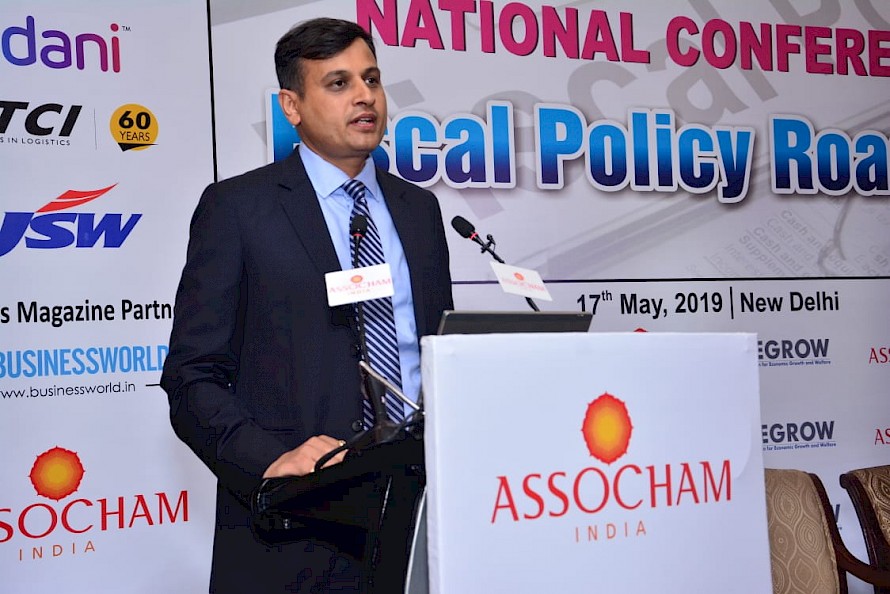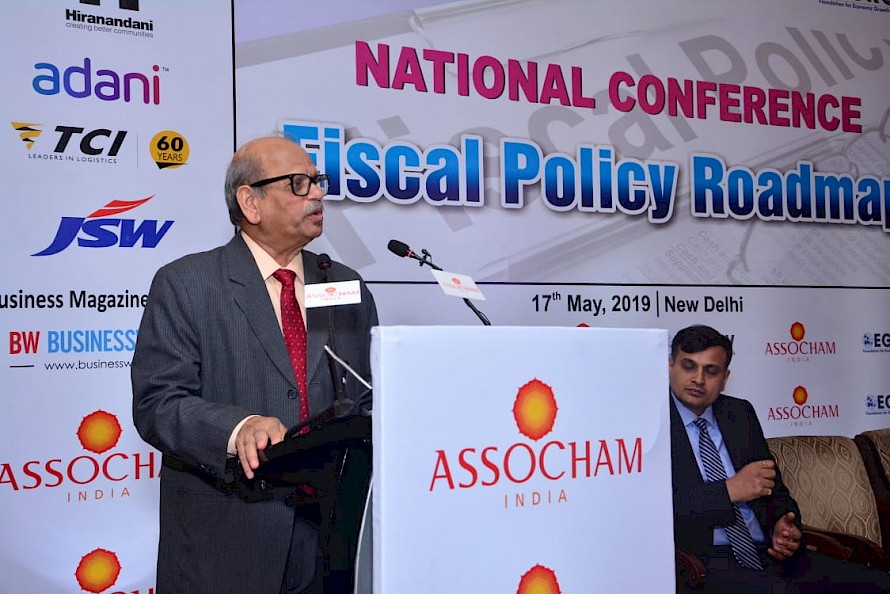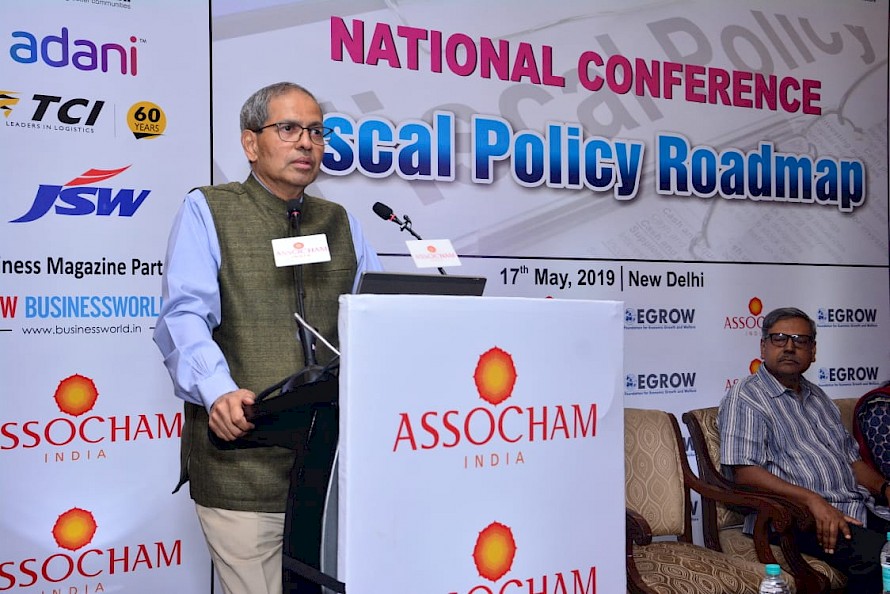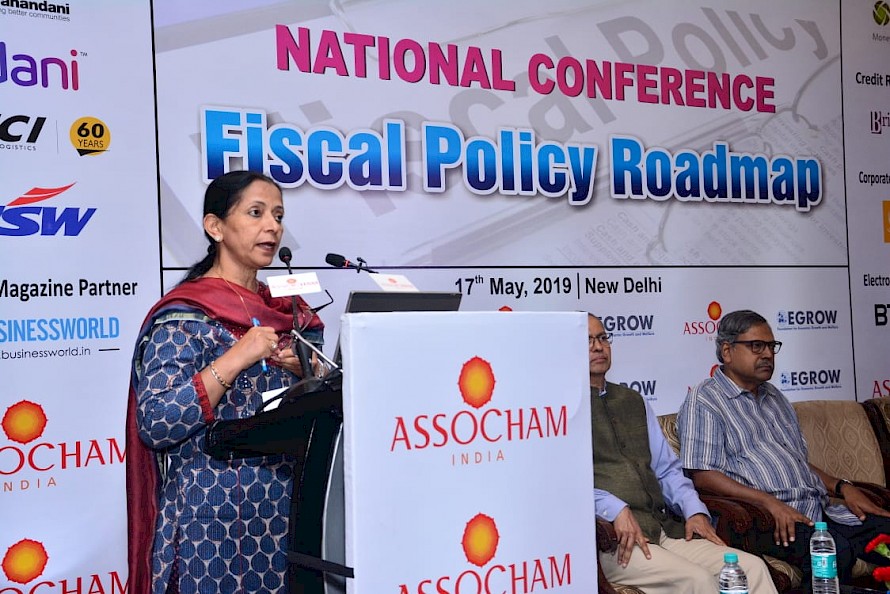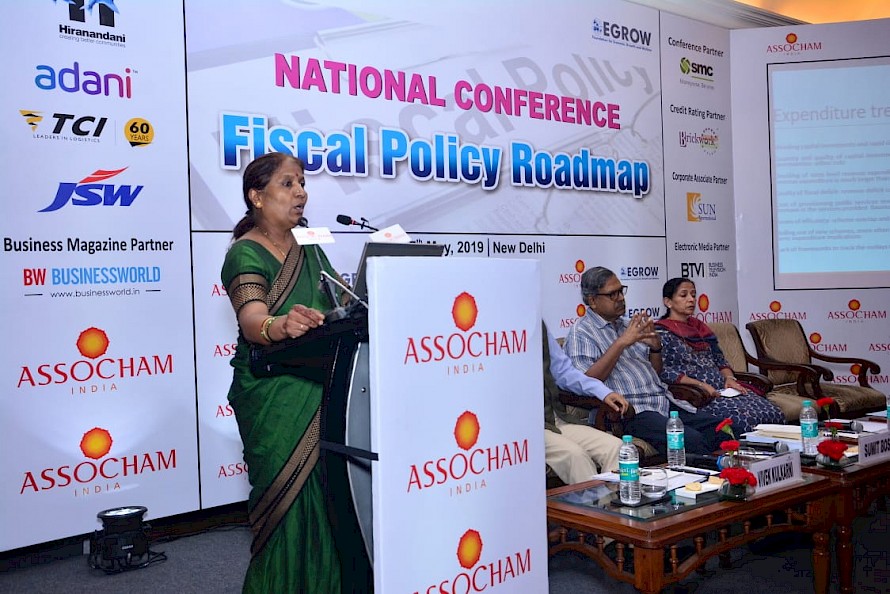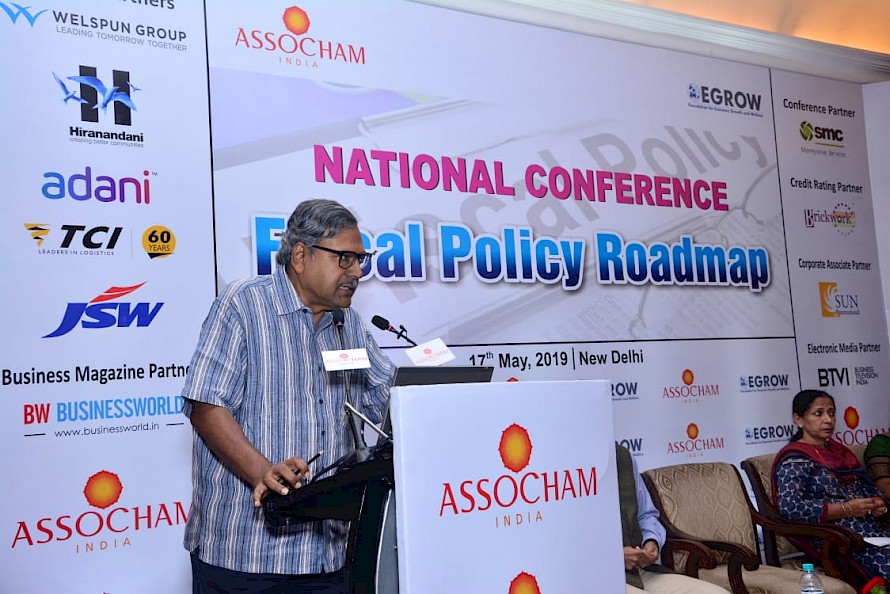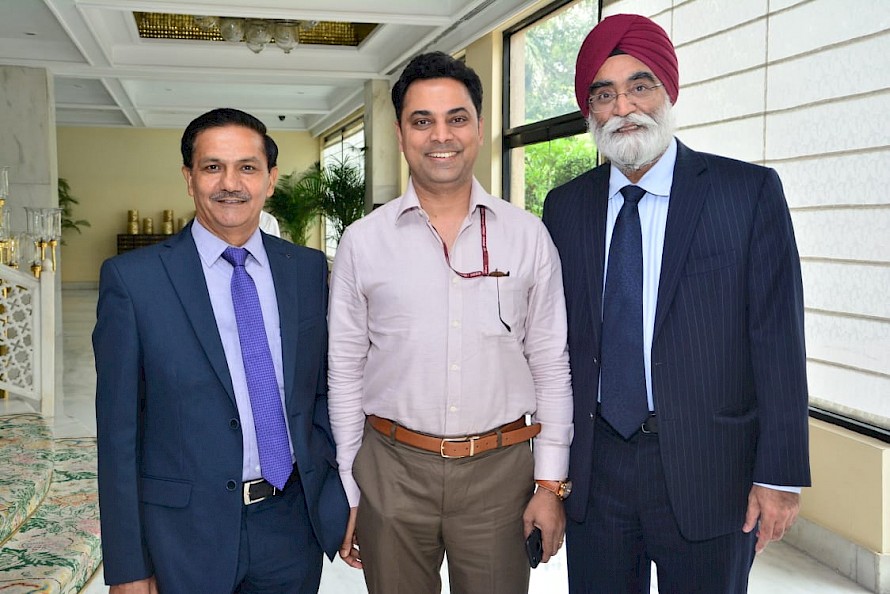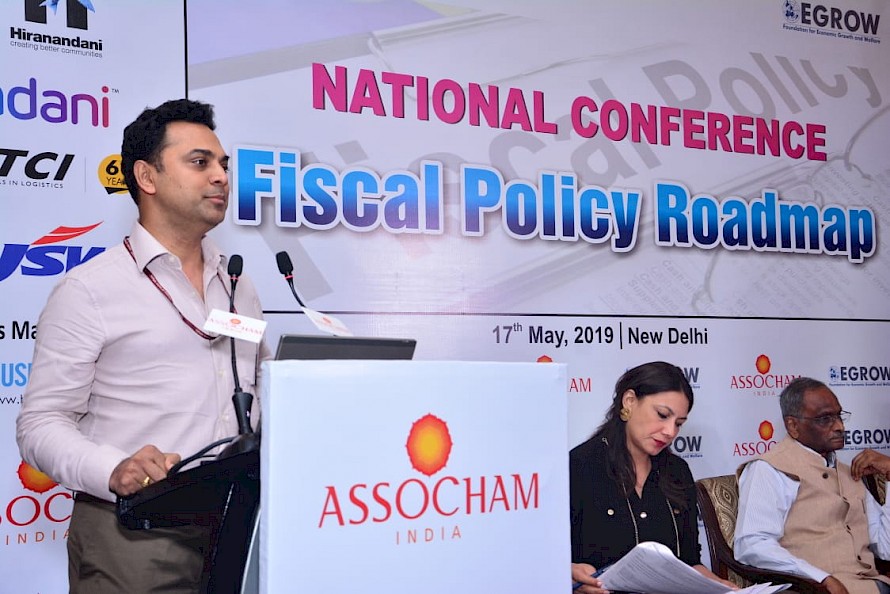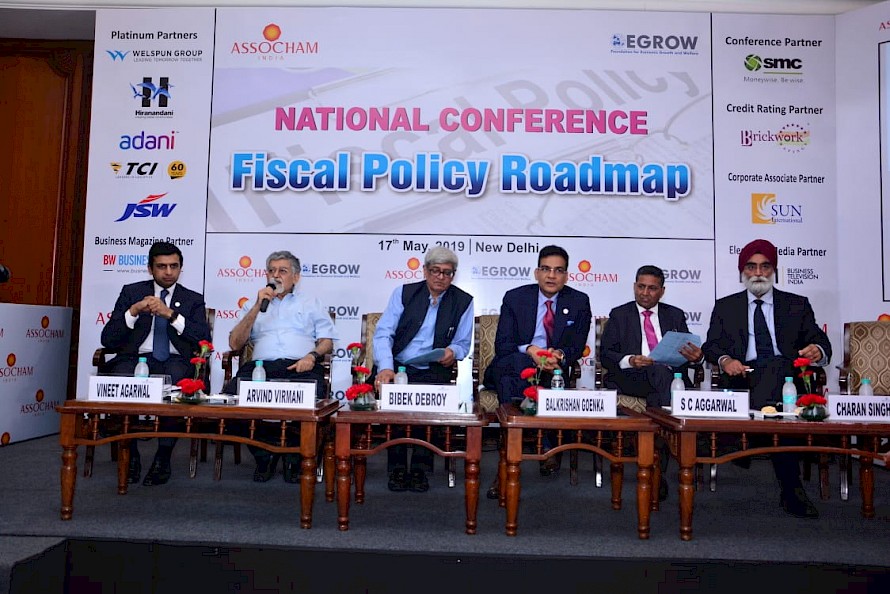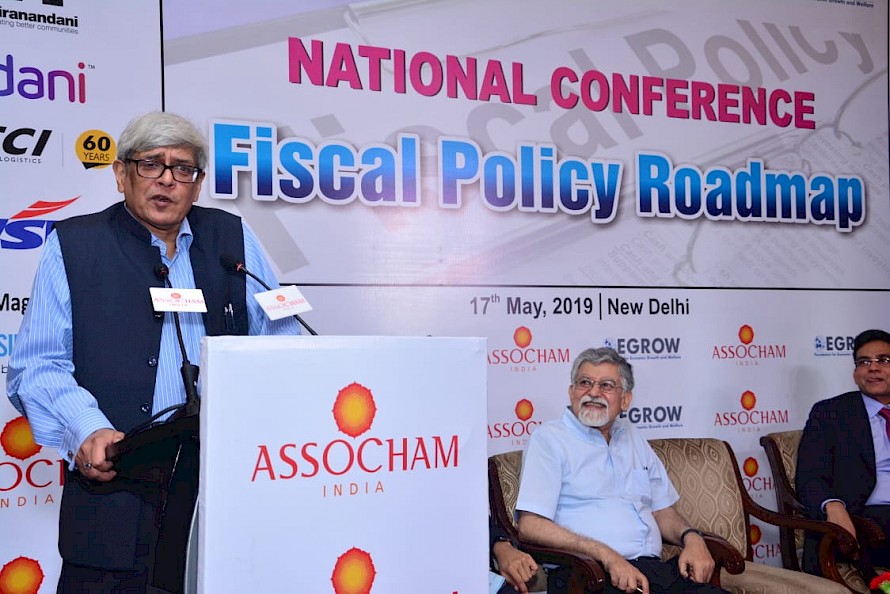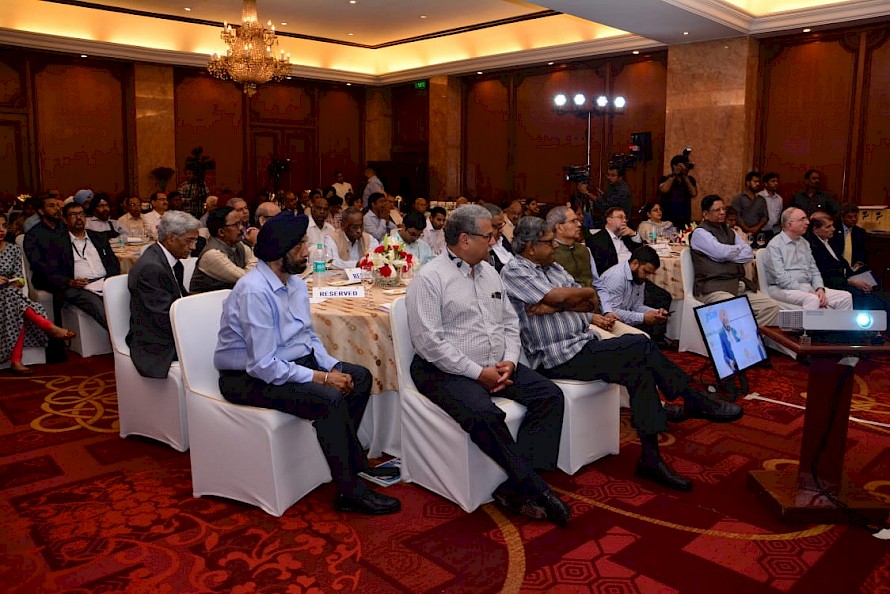Fiscal Policy Roadmap Conference held on May 17, 2019
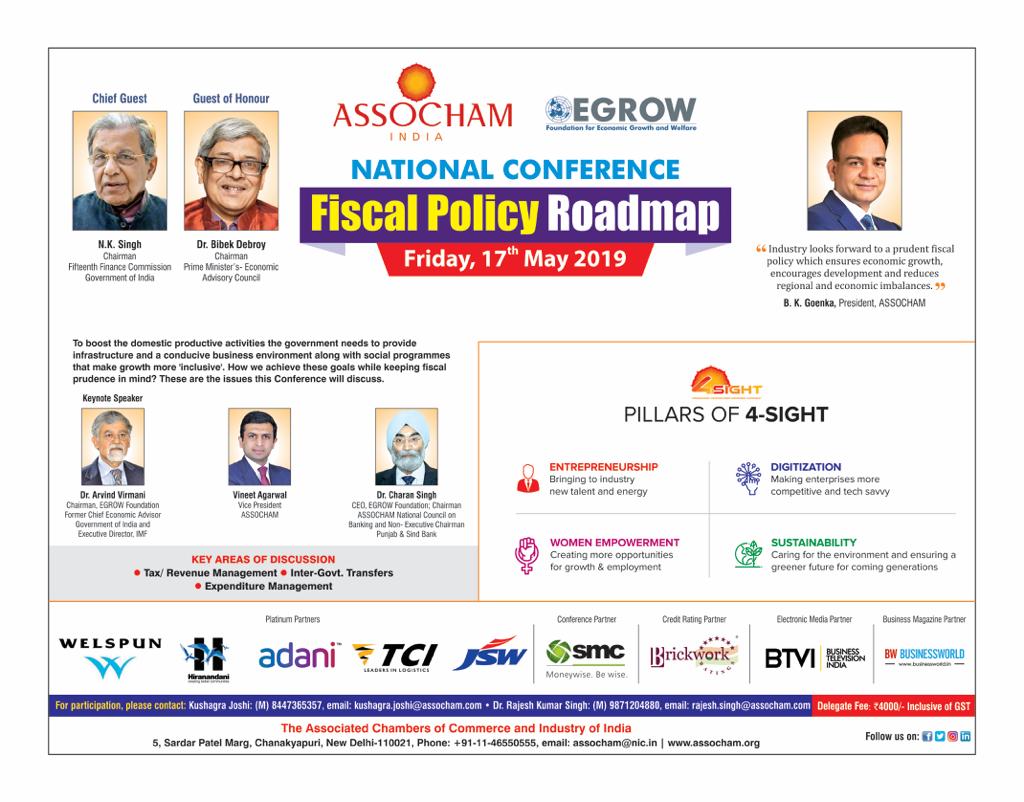
A ‘National Conference on Fiscal Policy Roadmap’ was held on 17th May 2019 with the objective to present a fiscal policy roadmap to the new union government. The conference was jointly organized by the EGROW Foundation and ASSOCHAM India. Sh. N.K. Singh, Chairman, Fifteenth Finance Commission inaugurated the conference and Dr. Bibek Debroy, Chairman, Prime Minister’s Economic Advisory Council delivered the valedictory address.
Brief of the discussions held at the conference is given below:
Inaugural Session
-
Dr. Arvind Virmani, Chairman EGROW Foundation stressed on the need for a Roadmap for progressive and prudent Fiscal Policy. He mentioned that India has high Fiscal Deficit & high real interest rate when compared globally. He emphasized for greater synchronization between the Fiscal & Monetary Policy.
-
Sh. B.K. Goenka, President ASSOCHAM mentioned that it is the right time for drawing-up the Road Map for the Fiscal Policy to be shaped by the Govt for FY 2019-20 onwards. He was appreciative of GST implementation but wanted it to be simplified and rationalized with clear tax rates for different categories of goods & services under GST. He outlined the need for Investment Cycle to move faster and bigger to realize the dream of making India USD 5 trillion economy. He said that Industrial sector, especially the medium sector, needs stimulus, which may include tax holidays for the vulnerable sectors.
-
Sh. N.K. Singh, Chairman, Fifteenth Finance Commission, endorsed the need for revival of Investment Cycle and wanted the private investment to pick up, which is muted at present. He expressed the need for focusing on the three factors of production i.e. land, labour & capital. He elaborated the need for reforms in each of these factors to achieve higher productivity. He emphasized on fiscal rectitude and avoidance of fiscal profligacy as the fundamentals for the Road Map. He mentioned about the need for synchronization of fiscal and monetary policies. On outlining the elements for new road map, he stressed on capping Debt/GDP ratio at 60% and its alignment with global economies. He mentioned the need to understand the challenges which States may face in containing debt at 20% level, in the overall 40% for Centre + 20% for State’s formula. Fiscal Deficit which is seen at 3.4% for the FY 2018-19 is desired to be contained at 3% in the medium run. Another important suggestion was to bring down Cost of Capital for investment cycle to revive the economy and the key to this is to increase Savings to GDP ratio, which is only 30% at present.
-
Shri Vikramjit Singh Sahney, President ICC & Chairman, Sun International suggested that the blueprint for Fiscal Roadmap must take note of slowing rural demand and disconnect of Agriculture Sector from other sectors. The issue of agricultural distress needs to be tackled on a priority basis.
-
Dr. Charan Singh, CEO and Director, EGROW spoke about the challenges the new Government would face in generation of higher growth and employment as well as maintaining fiscal discipline. There is a need to establish MSME Universities to develop entrepreneurs on the lines of Agricultural Universities in the 1960s. This will partially help in addressing the demographic pressures. Also, to achieve higher growth, increasing need is to take the Industry along.
Revenue Management
-
Dr. M. Govinda Rao, Emeritus Professor, NIPFP and Member, Fourteenth Finance Commission chaired the session. The speakers included Sh. Shekhar Bhandari, Kotak Mahindra Bank and Dr. Sacchidananda Mukherjee, NIFPP.
-
Rationalization of GST is to be seen as part of an ongoing process and not as a one-time measure. The issues of protection and populism, stability of GST, Tax compliance, IT infrastructure, effective tax administration, judicious revenue distribution between center & states and broadening tax base need to be examined afresh. Other important issues, such as, simplicity in tax architecture, share of local bodies, greater fiscal support to vulnerable states, electrical levies etc. need to be carefully considered.
-
There has been a steady improvement over the years in terms of numbers of tax payers, tax collection, tax compliance and number of online tax filing etc. The tax to GDP ratio remains low in India as compared to the global economies. There is lot of scope for improvement in compliance and incentivization to enhance revenue generation. The tax structure for the corporates should help in better tax compliance, higher tax collection and improved corporate profitability. Agriculture income may also be brought into the tax net.
-
Dr. Rao stressed on the ‘Need to Reduce Three Costs’, e.g., Cost of Collection, Cost of Compliance and Cost of Distortion. He emphasized on broadening of the tax base, having low tax rates and less tax differentiation. He strongly argued for setting up technical unit to provide inputs for streamlining of tax policies and procedures.
Expenditure Management
-
Shri Sumit Bose Member, Expenditure Management Commission (2014-16) and Secretary Thirteenth Finance Commission chaired the session with elaborate presentation on efficient expenditure management system. He strongly argued for evolving standards to achieve the best in expenditure management. He emphasized the need to instill transparency, improving the efficacy of PPP models, prudence rather than populism and the need to scrap overlapping government programs.
-
Contemporary issues in revenue administration include economic slowdown, higher NPAs in financial sector, agricultural distress, infrastructure and other development expenditure. Other issues include the need to minimize subsidies, labour productivity, reduction in public debt, fiscal consolidation & discipline, shunning populism, disinvestment and focusing on containing revenue expenditure.
-
Shedding of inefficiencies, disposal of non-core and surplus public assets and greater responsibility can bring about substantial change in expenditure management.
-
There is a need to reverse the trend of increasing revenue expenditure and falling capital expenditure. Data updating & accuracy, accountability, time & cost overrun are the other factors to deal with expenditure management.
Other Fiscal Issues
-
The session was moderated by Ms. Fatima Mahdi, Consulting Editor, BTVI. Other members of the panel were Dr. G.R. Reddy, Advisor, Finance, Govt of Telangana, Prof. R.K. Pattnaik, SPJIMR, Mumbai and Dr. Sajjid Z Chinoy, Chief India Economist, JP Morgan.
-
The focus was on off-budget items, bank funding of public expenditure and their impact on distortion in expenditure. The issues of prudent vs profligate state, need for incentivization in lending rate on borrowings based on fiscal deficit and quality of fiscal deficit of each state, bringing competitiveness among the states for control on fiscal deficit, burden of banking on the fiscal expenditure, standardization of calculation of Debt/GDP ratio were highlighted in the discussion.
-
Non-statutory items of expenditure, gross market borrowings, financing from RBI, and need for GST council to tread carefully on the element of federalism need to be factored in refining the taxation system.
Valedictory Session
In his concluding address Prof. Bibek Debroy, Chairman, Prime Minister’s-Economic Advisory Council focused on ‘Productivity’ and its measure. He highlighted the concept of ‘Foregone Expenditure & Exemptions in the Fiscal Policy’. There is a need to look at the Government as the supplier of public goods and services, wherein lot of public services fall under the domain of local bodies. States come next and the minimum burden falls upon the Centre as far as individual public needs are concerned. He opined that there is need for a fourth list (local bodies list) in the Constitution of India in addition to the Union, States & Concurrent lists. He asked that if Centre can finance health expenditure, which is an item under State list, then why the states should not contribute to the national defense, which is on the Union list?
Key takeaways of the event
On the basis of the day-long presentations, discussions and deliberations, the following elements of the basic fiscal policy roadmap emerged:
- High fiscal deficit and high real interest rate constrain the growth of Indian economy. Fiscal and monetary policy must not be seen in isolation but they should move in tandem to ensure higher economic growth.
- To enable the muted private investment to pick-up, further reforms in the factors of production are required, i.e., land, labor and capital.
- Revival of the investment cycle necessitates further simplification and rationalization of GST and reduction in the rate of direct taxes. While the tax net has to be increased and made more broad-based, the tax rates have to be reasonable and stable to promote growth and equity.
- Streamlining of long-term contracts, dispute resolution, simplifying cumbersome and protracted procedures must be integral part of a credible fiscal policy.
- Fiscal profligacy has spillovers into balance of payments issues and has systemic implications for long-term macroeconomic sustainability. Given the interrelationships between growth, inflation and current account deficit, there is need to observe strict fiscal prudence and fiscal righteousness. Hence issues of fiscal compliance across the board, fiscal architecture and fiscal federalism need to be re-examined for a comprehensive policy in conformity with emerging ground realities.
- Reviving the efforts to find balance or generate surplus on Revenue account and containing capital expenditure.
- There is need for a paradigm shift from managing fiscal deficit to managing total debt. Debt needs to be viewed as an important anchor with debt to GDP ratio of 60 per cent by 2024-25.
- The path to fiscal correction has to be carefully crafted because abrupt correction can cause fiscal suppression. Hence this challenging issue needs to be addressed gradually in a calibrated manner over the next five years. Towards this end, disaggregated doable path need to be worked out for each State with the twin objectives of bringing about fiscal discipline and containing hardship to the population.
- There is a need to revisit various lists like the Union, State and Concurrent List. Need for having a list for the local Authorities.
Event Pictures

